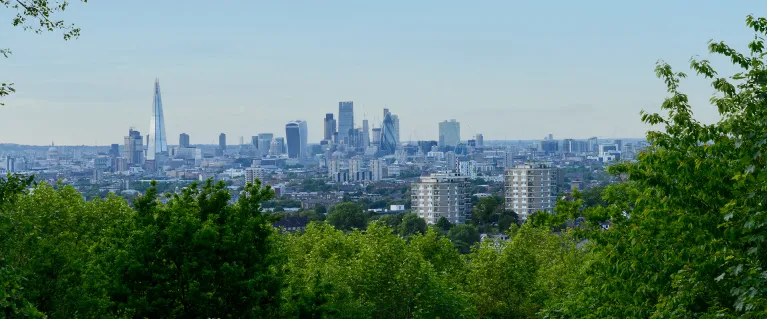
The Ultra Low Emission Zone (ULEZ) for London
The Ultra Low Emission Zone (ULEZ) is improving London’s air quality, benefiting public health and helping to combat climate change.
The ULEZ is the largest clean air zone in the world. It covers every borough of London, helping the capital’s nine million residents breathe cleaner air. Drivers of vehicles that don’t meet certain emission standards need to pay a daily charge to drive in the zone.
The ULEZ operates 24 hours a day, seven days a week, every day of the year, except Christmas Day (25 December).
The ULEZ expansion
To help clean London's air, the ULEZ was expanded on 29 August 2023 to cover all London boroughs.
Key findings from the London-wide Ultra Low Emission Zone One Year Report indicate that the London-wide ULEZ has already been highly effective at reducing the number of older, more polluting vehicles in London. The number of non-compliant vehicles seen driving in London on an average day has been cut by 58% since June 2023.
Nearly 97 per cent of vehicles seen driving in London on an average day now meet the ULEZ emission standards, up from just 39 per cent in 2017. This means that the vast majority of drivers are not affected by the ULEZ and do not need to pay the daily charge.
Pollutant emissions in 2024 are dramatically lower than expected if we hadn’t expanded the ULEZ London-wide. Nitrogen Oxide (NOx) emissions from cars and vans in outer London are 13 per cent and 16 per cent lower than would have been expected without the London-wide expansion.
Particulate matter (PM2.5) exhaust emissions from cars and vans in outer London are estimated to be 31 per cent lower than they would have been had we not expanded ULEZ to outer London. This equates to a PM2.5 exhaust emission saving of 9.1 tonnes in outer London in 2024.
These emission reductions are improving air quality. In the first year of operation, roadside nitrogen dioxide concentrations in London were up to 4.8 per cent lower than would have been expected without the expansion.
ULEZ facts
In London, toxic air contributes to around 4,000 premature deaths each year, as well as increased risks of asthma and cancer, and emerging evidence of links between air pollution and dementia. That’s why it was necessary to expand the ULEZ London-wide.
Any net revenue raised through the ULEZ is reinvested back into running and improving London’s public transport network. The ULEZ is expected to stop making a surplus by 2027 as the percentage of compliant vehicles continues to rise.
So far, all phases of the ULEZ have contributed to toxic nitrogen dioxide levels being lower than they would have been without the schemes. Nitrogen dioxide levels are:
-
27%
lower London-wide
-
54%
lower in central London
-
29%
lower in inner London
-
24%
lower in outer London
London’s air quality at the roadside has been improving at a faster rate than the average for the rest of England.
Key findings from the London-wide Ultra Low Emission Zone One Year Report show that the Mayor’s air quality policies, and in particular the ULEZ and LEZ schemes, are having an important impact by reducing the number of older, more polluting vehicles seen driving in London and the levels of harmful air pollution that Londoners are exposed to.
ULEZ support
Over 97 per cent of cars seen driving in London on an average day now meet the ULEZ emission standards. This means the vast majority of drivers are not affected by the ULEZ and do not need to pay the daily charge.
There are some temporary exemptions from the charge. You must apply directly to TfL for these exemptions.
-
Community transport minibuses run by not-for-profit organisations: exempt until October 2025.
-
Recipients of certain disability-related benefits and wheelchair accessible vehicles: exempt until October 2027.
* Based on the calculated difference with a no-ULEZ scenario. See Inner London Ultra Low Emission Zone - One Year Report (PDF)
Need a document on this page in an accessible format?
If you use assistive technology (such as a screen reader) and need a version of a PDF or other document on this page in a more accessible format, please get in touch via our online form and tell us which format you need.
It will also help us if you tell us which assistive technology you use. We’ll consider your request and get back to you in 5 working days.